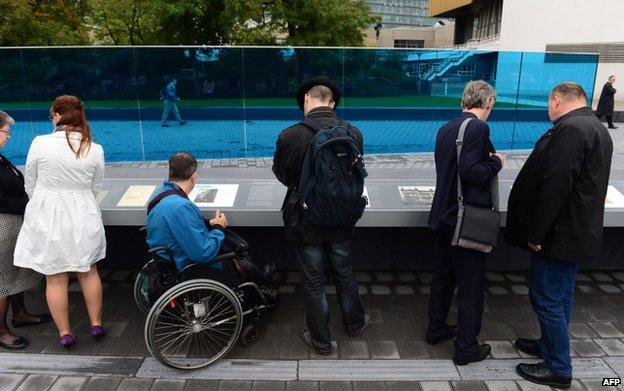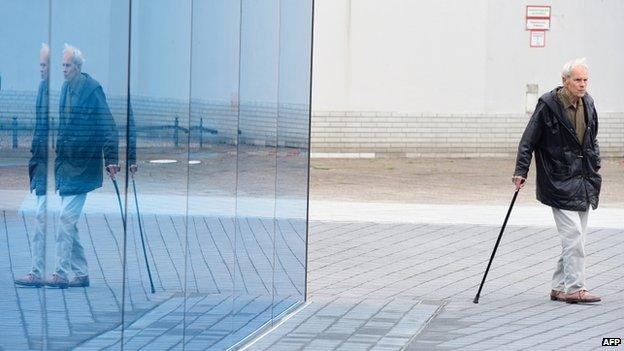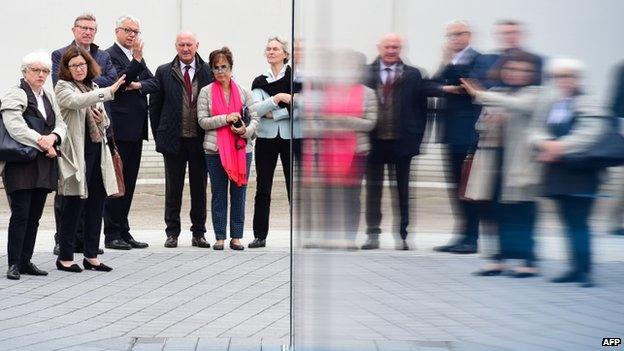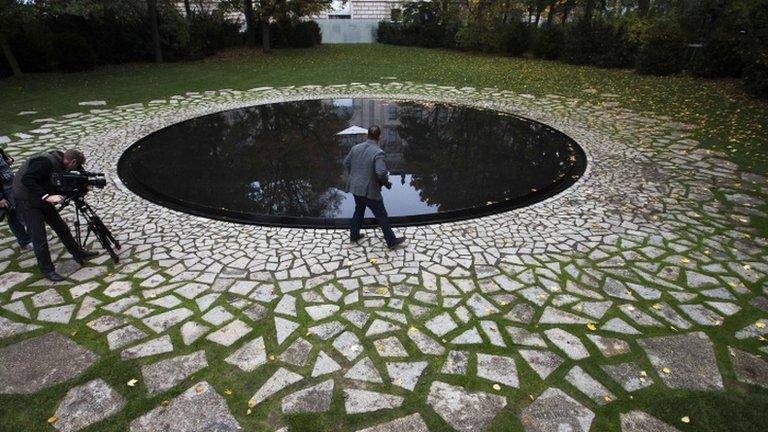Nazi disabled victims memorial unveiled in Berlin
- Published

The Nazi programme officially ended in 1941 but carried on covertly until the end of the war
A glass monument has been publicly opened in Berlin to 300,000 victims of the Nazis with mental and physical disabilities or chronic illnesses.
The 24m-long (80ft) blue, glass wall is in front of the Berlin Philharmonie building, where the office housing the Nazi "euthanasia" programme once stood.
It is the fourth monument in the German capital to victims of the Nazis.
In the past 10 years, memorials have been erected to Jewish, Roma (Gypsy) and gay victims.
Under Adolf Hitler's initial programme, the Nazis killed more than 200,000 people from early 1940 to August 1941, focusing on patients in mental health clinics and care homes.
It was known as T4, after the Tiergartenstrasse 4 office from which it was directed.
The T4 programme continued covertly for another four years, with gas chambers and killing centres used in Germany and Austria.
It was considered a precursor to the Holocaust in which six million Jews were murdered.

Patients from hospitals and nursing homes were among those systematically murdered

The memorial was designed by architects Ursula Wilms and Heinz Hallmann, and artist Nikolaus Koliusis
- Published24 October 2012
